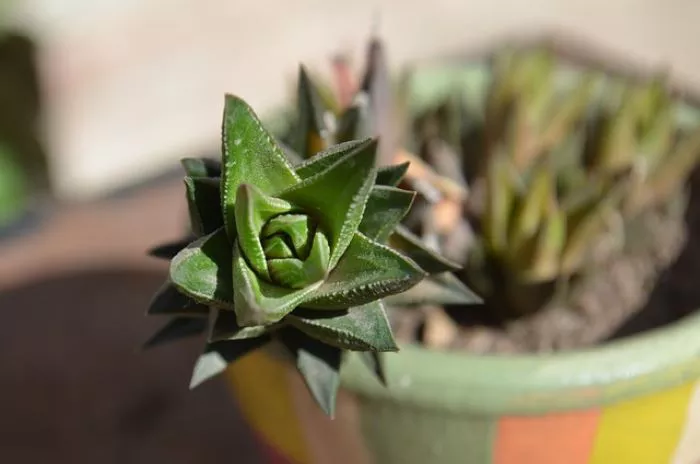Succulents are popular plants known for their unique shapes, vibrant colors, and ability to thrive in dry conditions. They are often chosen for their low maintenance and resilience. If you are interested in starting your own succulent collection, understanding the basics of succulent care and propagation is essential. This article will guide you through the process of starting succulents, from choosing the right plants to providing proper care.
Choosing the Right Succulents
Before starting, it is important to choose the right succulent species. There are thousands of succulent varieties, each with its own unique characteristics and care requirements. Some popular choices for beginners include Echeveria, Sedum, Haworthia, and Aloe. These plants are generally easy to care for and can adapt well to various environments.
When selecting succulents, consider factors such as light availability, temperature, and humidity in your home. Some succulents prefer bright, direct sunlight, while others thrive in lower light conditions. Research each species to ensure it will fit well in your chosen environment.
Gathering Supplies
To successfully start succulents, you will need a few essential supplies. These include:
Containers: Choose pots with drainage holes to prevent water accumulation. Terracotta pots are a popular choice because they allow for better airflow and moisture control.
Soil: Use a well-draining potting mix specifically designed for succulents and cacti. You can also create your own mix by combining regular potting soil with sand, perlite, or pumice.
Watering can: A watering can with a narrow spout allows for precise watering, which is especially important for succulents.
Tools: Basic gardening tools such as a small trowel, scissors, and a spray bottle can be helpful for planting and maintaining your succulents.
Planting Succulents
Once you have gathered your supplies, it is time to plant your succulents. Follow these steps for successful planting:
Prepare the Container: Fill the pot with the well-draining soil mix, leaving about an inch of space at the top. This space will allow for easy watering without overflow.
Plant the Succulent: Remove the succulent from its nursery pot. Gently loosen any tightly bound roots. Place the succulent in the center of the new pot and fill in around the roots with more soil. Ensure the plant is stable and upright.
Water Lightly: After planting, water the succulent lightly. Allow the soil to dry out completely before the next watering. Overwatering is a common mistake that can lead to root rot.
Provide Proper Light: Place the potted succulent in a location with bright, indirect sunlight. Most succulents thrive with at least six hours of light each day. If you notice the plant stretching toward the light, it may need more exposure.
Caring for Succulents
Proper care is essential for the health and growth of your succulents. Here are some key care tips:
Watering
Succulents require less water than many other houseplants. It is important to follow the “soak and dry” method. Water the plant thoroughly, allowing excess water to drain out of the bottom. Wait until the soil is completely dry before watering again. The frequency of watering will depend on factors such as temperature, humidity, and the size of the pot.
Fertilizing
Succulents do not need a lot of fertilizer. During the growing season, which is typically spring and summer, you can feed your succulents with a diluted, balanced fertilizer. Use it once a month to provide essential nutrients. Avoid fertilizing in the fall and winter when the plants are dormant.
Pruning and Maintenance
Regularly check your succulents for dead or damaged leaves. Prune these away to encourage healthy growth. You can also remove any offsets or “pups” that may grow around the base of the plant. These can be propagated to create new plants.
Monitoring for Pests
Keep an eye out for common pests that can affect succulents, such as mealybugs and aphids. If you notice any signs of infestation, treat the plant promptly with insecticidal soap or neem oil. Regularly inspecting your plants can help prevent larger infestations.
Propagation of Succulents
One of the most rewarding aspects of starting succulents is the ability to propagate them. There are several methods of propagation, including leaf cuttings, stem cuttings, and offsets.
Leaf Cuttings
To propagate succulents from leaf cuttings, choose a healthy leaf from the parent plant. Gently twist the leaf off to ensure a clean break. Allow the leaf to callous over for a few days in a dry location. Once calloused, place the leaf on top of well-draining soil. Water lightly and wait for roots and new growth to develop.
Stem Cuttings
Stem cuttings can also be used for propagation. Cut a healthy stem from the parent plant, ideally around three to six inches long. Allow the cut end to callous for a few days before planting it in well-draining soil. Water lightly and provide bright, indirect light. Roots should develop in a few weeks.
Offsets
Many succulents produce offsets, or “pups,” that can be removed and planted separately. Gently twist or cut the offset from the parent plant, ensuring it has some roots attached. Allow it to callous for a few days before planting it in its own pot.
Conclusion
Starting succulents is a rewarding and enjoyable endeavor. By choosing the right plants, gathering the necessary supplies, and providing proper care, you can create a thriving succulent collection. Understanding the basics of planting, watering, and propagating will help you succeed in growing these beautiful and resilient plants. With a little patience and attention, your succulents will flourish and bring beauty to your home or garden.


